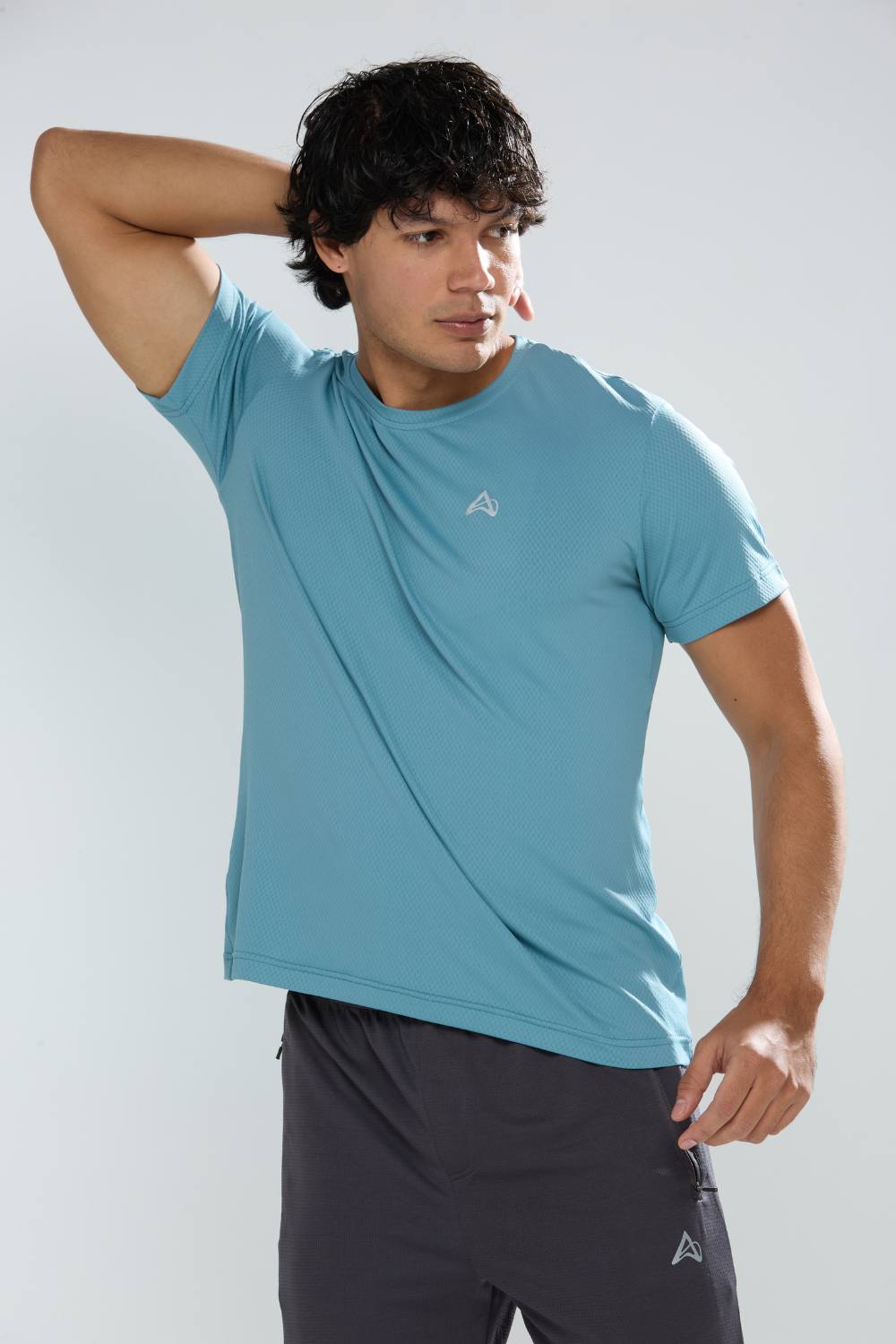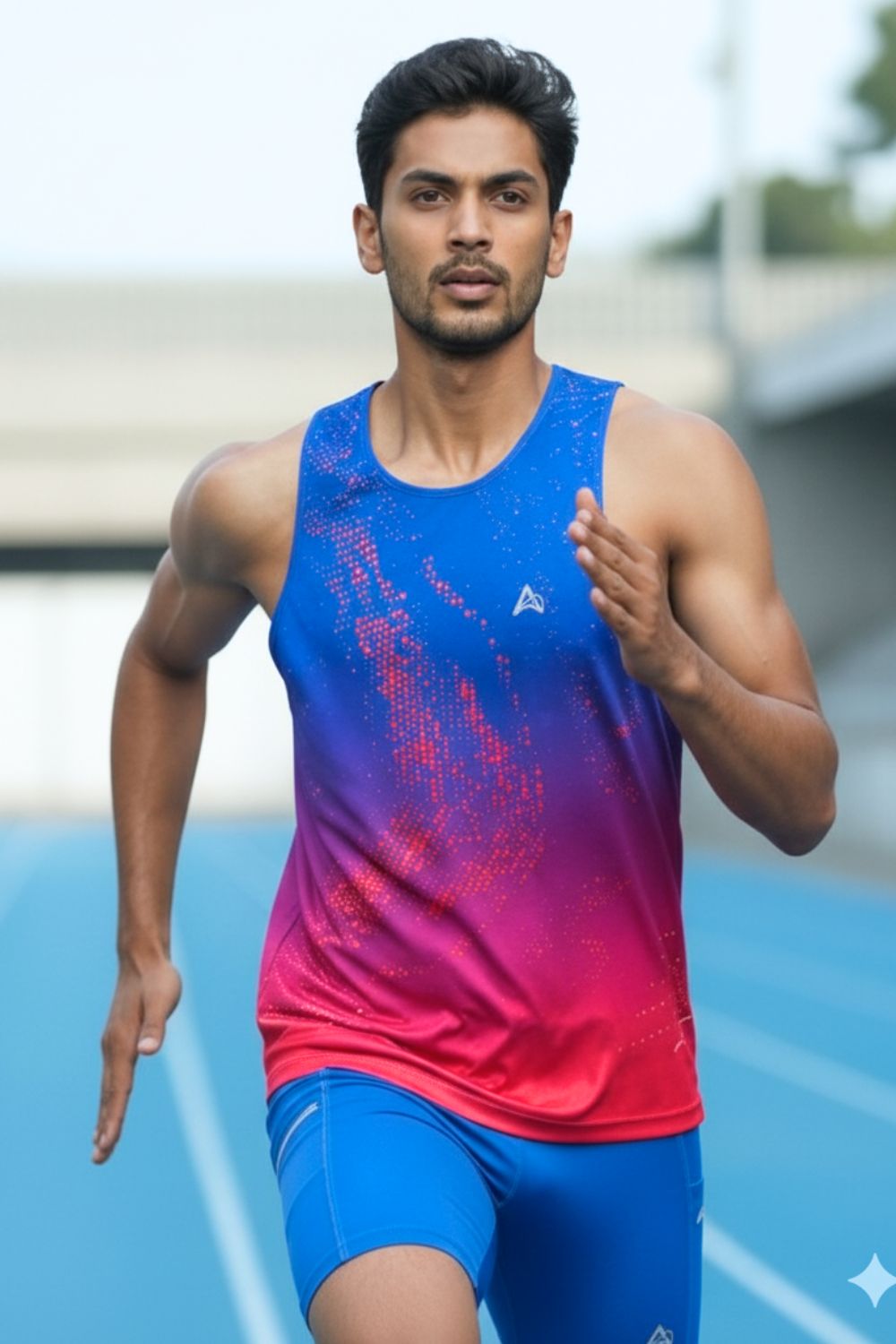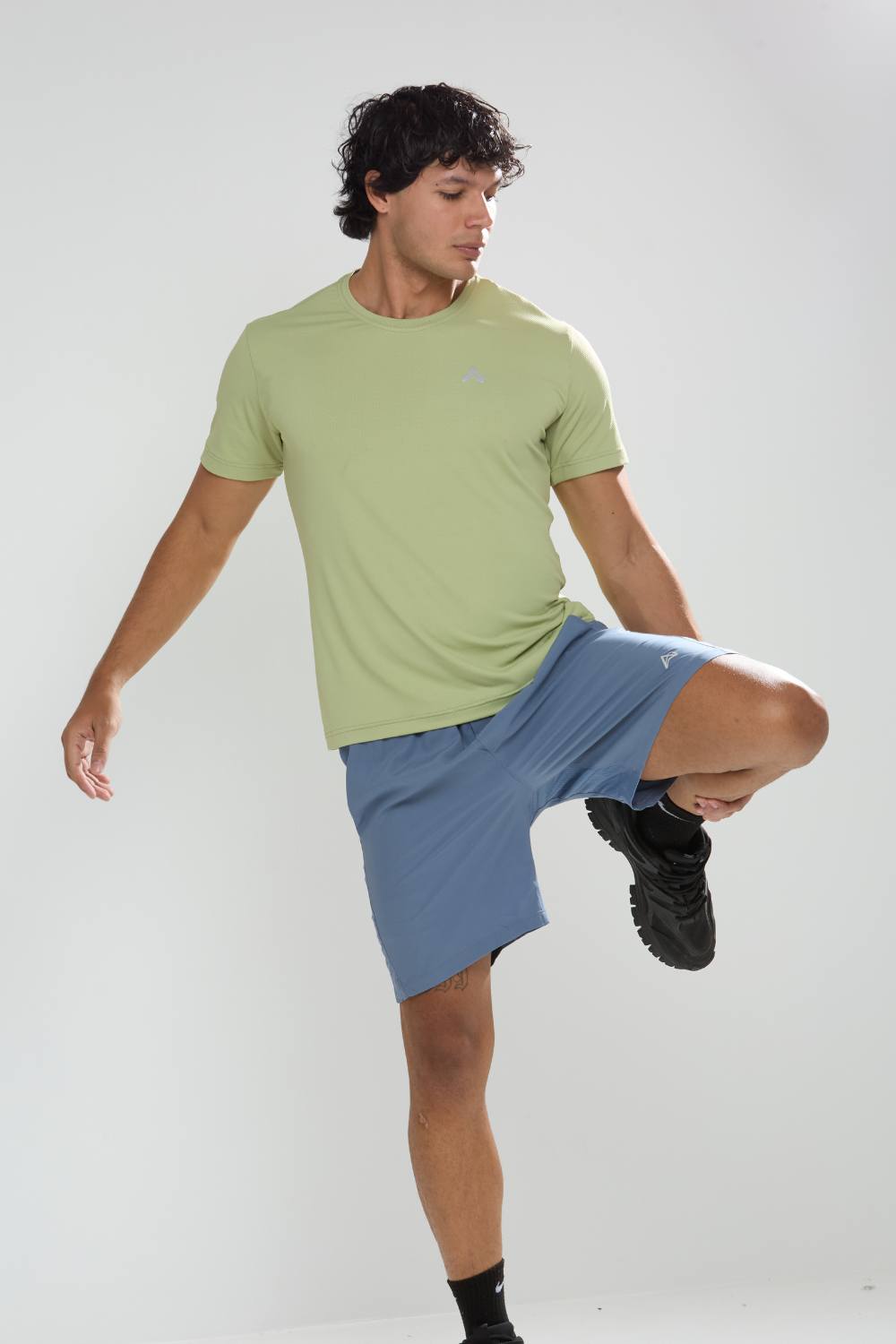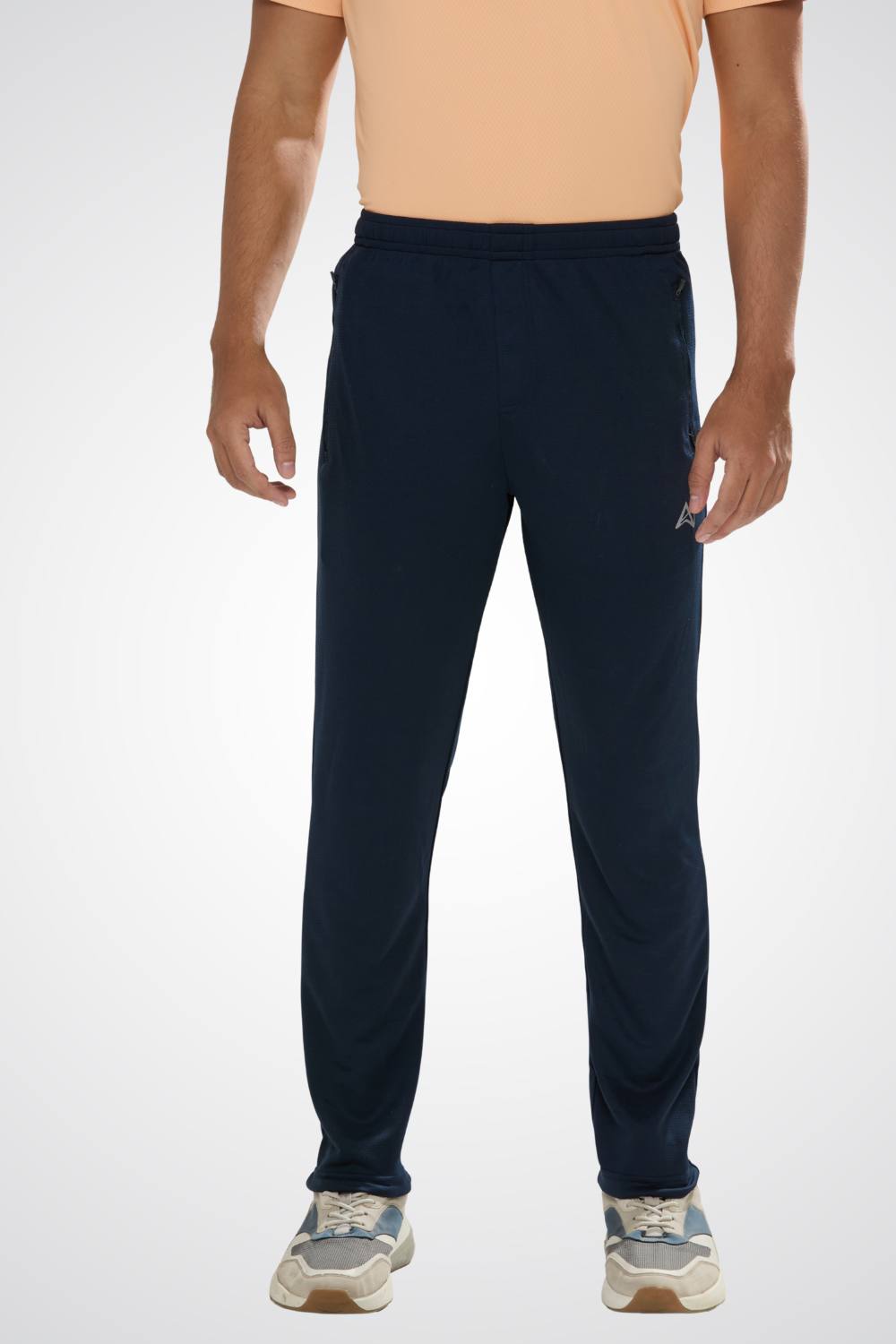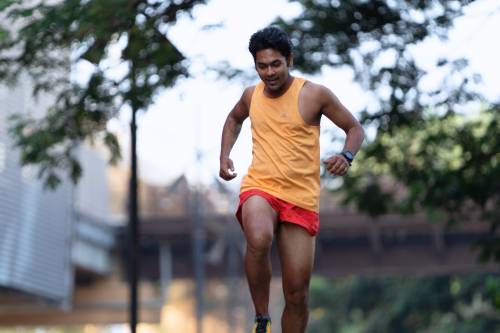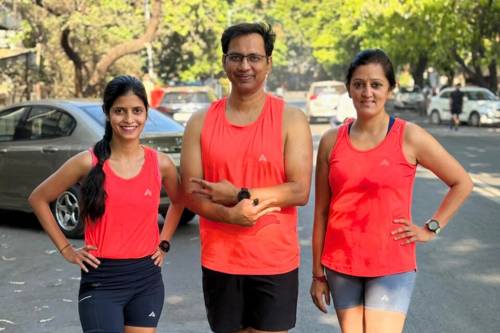Quick Listen:
The streets of Mumbai come alive before dawn, a sea of determined faces illuminated by streetlights and the glow of anticipation. Over 65,000 runners from seasoned elites to enthusiastic novices gather for the Tata Mumbai Marathon, their footsteps echoing a collective pursuit of endurance and achievement. In Bengaluru, 40,000 participants tackle the TCS World 10K, fueled by personal goals and communal spirit. This surge in marathon participation isn't merely a fleeting trend; it's a profound cultural evolution in India, one that's profoundly influencing the choices endurance runners make in their gear.
Tired of gear that slows you down? Chafing, soggy fabrics, and missing pockets kill your run's momentum. At Aguante, we're runners who get it. Our high-performance activewear features moisture-wicking fabrics, ergonomic designs, and smart storage to keep you focused. Shop Now!
Marathon Mania Sweeps Across India
Running has firmly established itself as a mainstream pursuit in India, evolving far beyond occasional jogs into a vibrant, nationwide movement. Events now span diverse landscapes, from Goa's sandy shores to Kashmir's breathtaking valleys, Kolkata's storied avenues, Shimla's undulating hills, and Ayodhya's sacred paths. Each locale hosts signature races that are ascending to national prominence, drawing crowds and fostering local pride.
A robust running community of 2.6 million is at the heart of this expansion, propelling the demand for organized events. The Tata Mumbai Marathon 2025 attracted 60,000 participants initially, but recent figures indicate over 65,000 runners took part, marking a significant uptick. Similarly, the TCS World 10K Bengaluru 2025 saw 40,000 enthusiasts, including internationals, braving the course. Post-pandemic, this sport has matured, with new runners from varied age groups and urban centers joining in droves. The Adani Ahmedabad Marathon, for instance, ballooned from 8,000 to nearly 20,000 participants, emphasizing causes like #Run4OurSoldiers.
This isn't just about lacing up shoes; it's a reflection of broader societal shifts. Heightened health consciousness, coupled with urbanization and increasing disposable incomes, is encouraging millions to swap desk-bound lifestyles for the exhilaration of the open road. Government initiatives, such as sports promotion campaigns, further amplify this, turning running into a symbol of wellness and resilience.
Gear Innovations Matching the Stride
India's diverse and often harsh climate intense heat, relentless humidity during monsoons, and pervasive urban pollution demands gear that performs under pressure. Runners are increasingly opting for advanced materials that combat these elements: lightweight fabrics that wick away moisture, ensuring comfort during extended efforts. Compression garments, designed to minimize muscle strain, have transitioned from specialty items to essentials for many. Accessories like hydration systems and chafe-resistant clothing are also in high demand, prioritizing functionality over long distances.
Supporting this trend are compelling market figures. The India running gear market stood at USD 2.4 billion in 2024 and is forecasted to expand to USD 4.8 billion by 2033, achieving a CAGR of 7.71% from 2025 to 2033. This expansion is fueled by heightened fitness engagement, urban growth, recreational running's rise, marathon proliferation, athlete endorsements, and e-commerce's convenience. Market segments include running footwear (leading the pack), apparel, accessories, and fitness trackers. Gender-wise, it's split into male (dominant), female, and unisex categories, while distribution spans specialty sports outlets, hypermarkets, discount stores, online channels, and more. Regionally, West and Central India lead, followed by North, South, and East.
Sustainability is emerging as a key influencer, with brands incorporating recycled materials and eco-dyes to appeal to conscious consumers. Technological integrations, such as smart sensors for gait monitoring and biometric feedback, are elevating gear from mere clothing to performance enhancers. These developments align perfectly with the needs of marathoners, who seek reliable, innovative products to conquer India's challenging terrains.
Brands Racing to Meet Demand
Major marathons in cities like Mumbai, Delhi, and Bengaluru serve as prime platforms for showcasing gear advancements. Global powerhouses such as Nike and Adidas are customizing products for local conditions, introducing breathable meshes and durable soles suited to irregular city surfaces. Domestic players like HRX and international chains like Decathlon provide cost-effective, quality alternatives, resonating with budget-aware buyers.
Collaborations are thriving, transforming events into marketing spectacles. For example, at the Tata Mumbai Marathon, participants showcase branded ensembles sweat-wicking shirts, supportive footwear, and advanced trackers effectively turning the race into a dynamic advertisement. Regional adaptations are evident: breathable options prevail in humid South India, while lighter layers suit the North's variable weather. Recent partnerships, like PUMA's tie-up with the Mumbai Half Marathon and Bengaluru Marathon in May 2025, include training sessions and exclusive apparel, enhancing brand visibility.
Moreover, new entrants like Lululemon are eyeing India, planning a 2026 launch via partnerships, targeting the premium segment. Nike's Vomero 18, released in late 2024, emphasizes cushioning and gender-specific designs, while Saucony's introduction via omni-channel strategies adds variety. These initiatives underscore how brands are aligning with India's running surge, fostering loyalty through tailored experiences.
Hurdles in the Path Ahead
Yet, the path isn't without obstacles. Affordability poses a major barrier in a market sensitive to prices, where premium gear can deter widespread adoption. Supply chains falter in smaller cities, limiting access to specialized stores or dependable online deliveries. The quality control orders (QCOs) implemented in 2023 for footwear disrupted imports, causing shortages for brands like Nike and Superdry. Aimed at bolstering local production, these mandates required BIS certification for factories, delaying overseas approvals and slashing imports from USD 920.34 million in 2022 to USD 299.76 million in 2023.
While certifications have commenced for facilities in Malaysia, Thailand, Vietnam, and Bangladesh excluding Chinese ones the process spans two to three months per site. This has led to sales dips, with executives noting six to eight months of lost business. Educating consumers on technical benefits remains challenging, as many novices overlook the advantages of superior materials. Global brands contend with agile Indian startups leveraging domestic manufacturing for competitive pricing. The Indian footwear industry, valued at USD 26 billion, could triple to USD 90 billion by 2030 through import restrictions, incentives, design hubs, and attracting manufacturers like those from Taiwan. Non-leather segments, including running shoes, are poised to jump from 25% to 75% market share, shifting production to corporates.
Seizing Opportunities at Every Turn
Amid these challenges lie abundant prospects. E-commerce's expansion bridges gaps, enabling remote access to elite gear. Niche offerings, such as tailored fits for genders or ultra-marathon specifics, cater to evolving preferences. Customization engraving names or adjusting sizes builds personal connections, while alliances with influencers, clubs, and events amplify reach.
The overarching sports sector provides momentum. As per a CareEdge Ratings report, India's sports market, currently at USD 52 billion (core sectors USD 31 billion, allied USD 21 billion), is set to grow at 10-12% CAGR through 2030. Representing 0.9% of GDP, it interconnects with media, education, and tourism, multiplying impacts. Exports reached USD 497.3 million in FY25's first ten months, projected to hit USD 660 million in FY26, with hubs like Jalandhar and Meerut producing 75-80% of goods. Emerging areas in Tamil Nadu and Maharashtra focus on synthetics and accessories, bolstered by reforms.
Economic ripples from major running events are substantial. The Mumbai Marathon, for instance, generates significant revenue for the city, with sponsorships requiring considerable investment from brands. India's running event industry continues to expand at a rapid pace, drawing strong interest from global corporations. Companies like TCS channel notable resources into marathons worldwide, viewing them as platforms to amplify visibility and engagement.
A Marathon Without an End
India's marathon phenomenon transcends exercise; it's a catalyst reshaping sportswear dynamics. As throngs converge in cities nationwide, they compel brands to innovate with resilient, adaptive, and eco-conscious products. Global and local entities are responding, blending performance with accessibility to meet this demand.
Looking ahead, with markets on track for substantial growth running gear doubling by 2033 and broader sports potentially reaching USD 130 billion by 2030 this momentum promises enduring change. India's runners aren't merely pursuing medals; they're pioneering a healthier, more connected future, one stride at a time.
Frequently Asked Questions
How big is the running gear market in India and what's driving its growth?
India's running gear market was valued at USD 2.4 billion in 2024 and is projected to reach USD 4.8 billion by 2033, growing at a CAGR of 7.71%. This growth is driven by increased fitness awareness, urbanization, rising disposable incomes, and the surge in marathon participation with events like the Tata Mumbai Marathon attracting over 65,000 runners. The robust running community of 2.6 million participants is fueling demand for specialized gear suited to India's diverse climate conditions.
What type of running gear do Indian marathoners prefer for the country's challenging climate?
Indian runners increasingly choose advanced gear designed for the country's intense heat, humidity, and urban pollution. Popular choices include lightweight moisture-wicking fabrics, compression garments to minimize muscle strain, breathable mesh materials, and chafe-resistant clothing. Hydration systems and accessories have become essential, with regional preferences emerging breathable options dominate in humid South India while lighter layers suit North India's variable weather conditions.
Which brands are leading the Indian running gear market and how are they adapting?
Global brands like Nike and Adidas are customizing products for local conditions with breathable meshes and durable soles for irregular city surfaces, while domestic players like HRX and international chains like Decathlon offer cost-effective alternatives. Recent partnerships include PUMA's collaboration with Mumbai Half Marathon and Bengaluru Marathon, and new entrants like Lululemon planning a 2026 India launch. These brands are incorporating sustainability features with recycled materials and smart technology integration to meet the demands of India's growing marathon community.
Disclaimer: The above helpful resources content contains personal opinions and experiences. The information provided is for general knowledge and does not constitute professional advice.
You may also be interested in: Sustainable Activewear Gains Ground in India
Tired of gear that slows you down? Chafing, soggy fabrics, and missing pockets kill your run's momentum. At Aguante, we're runners who get it. Our high-performance activewear features moisture-wicking fabrics, ergonomic designs, and smart storage to keep you focused. Shop Now!
Powered by flareAI.co





